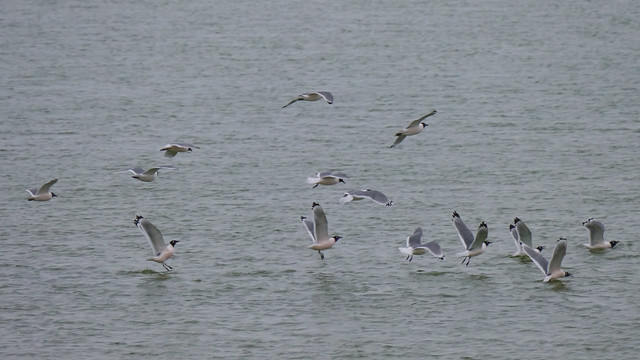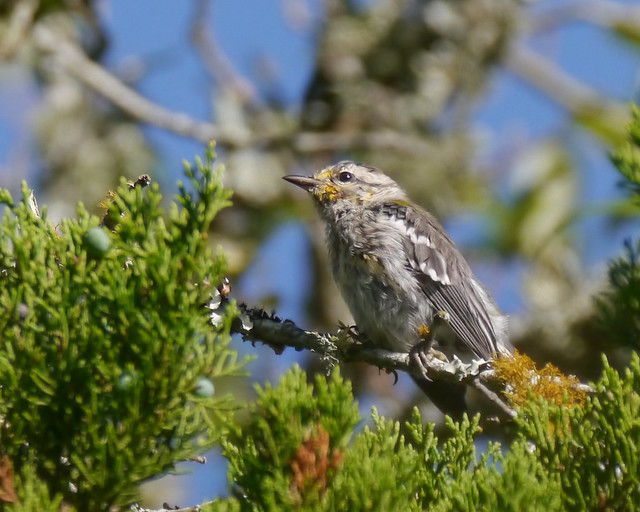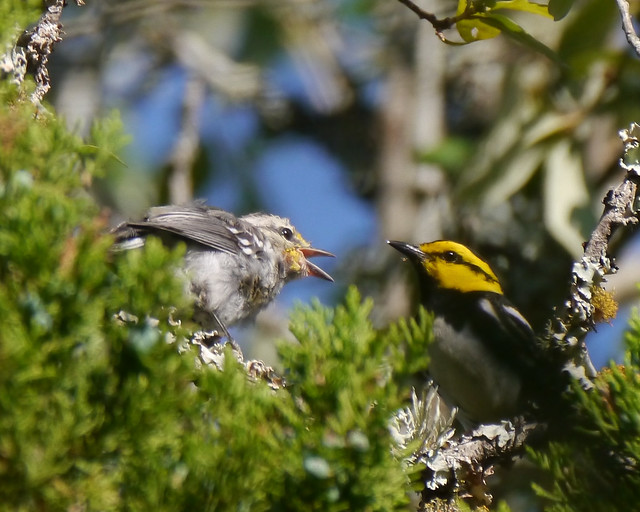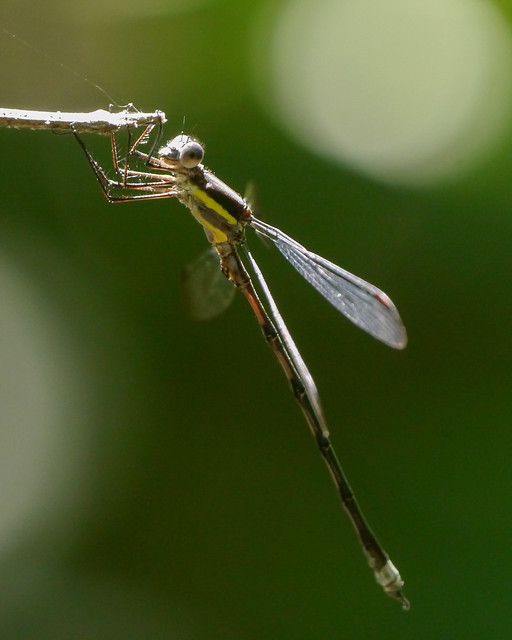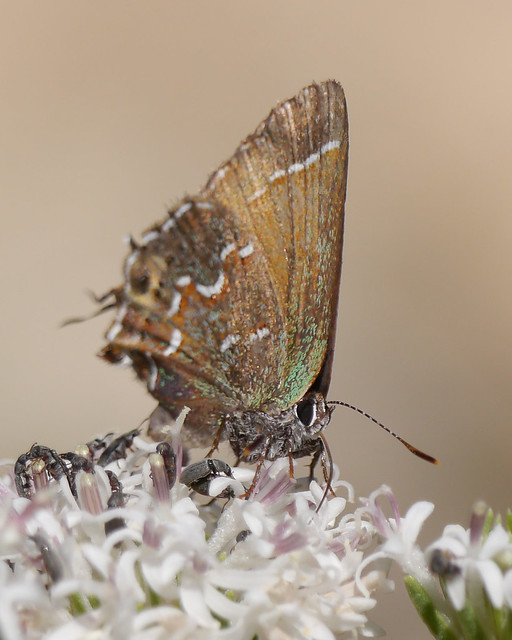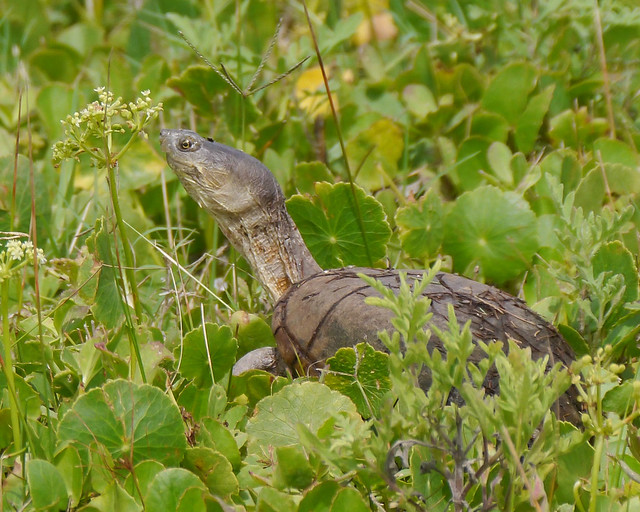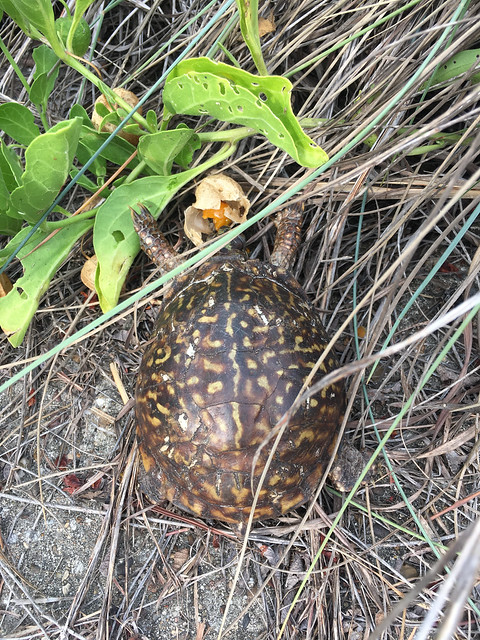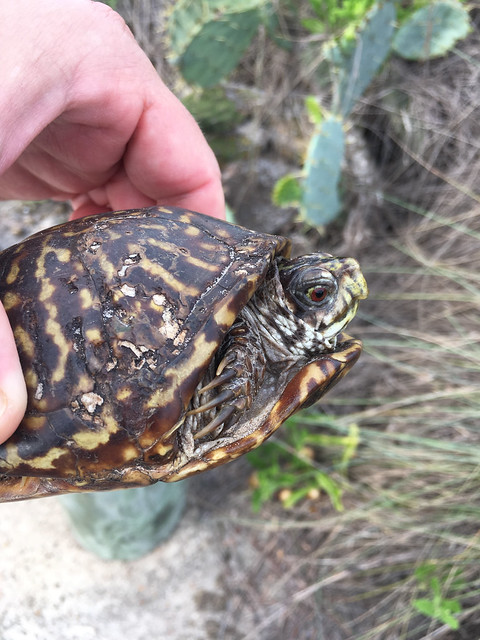Saturday morning starting at around 8:30 I spent about 3.5 hours birding the north section of the Port Aransas Nature Preserve at Charlie's Pasture. I started at the pavilion and walked the trail and boardwalk south, down to Salt Island and back. This time of year there are still some birds migrating north, and the Texas coast is famous for the number of north-bound migrating birds that can be seen here in May. But now, late in May, our year-round and summer resident birds have started nesting. And the change in behavior and sometimes appearance I got to observe in these birds this morning was dramatic!
Many of the birds that use this preserve for breeding desperately need its protection because they nest on the ground. Nesting on the ground has become harder and harder for these birds as human development and recreational land use continues to expand into new areas. Even just walking off-trail here negatively affects their nesting success.
A few of our year-round resident Black-necked Stilts and Willets must have selected nest sites close to the northern part of the boardwalk, because as I walked through this area they made constant alarm calls and flights. The Black-necked Stilts were even flying up to chase and scold other birds that flew by too closely, including the huge Magnificent Frigatebirds! Here are a couple shots I got:
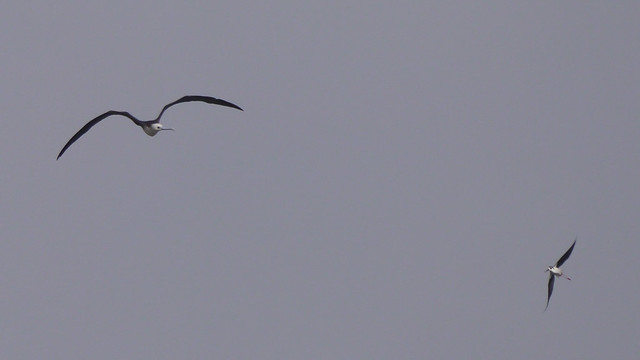
Above, you can see the frigatebird looking to its left at the approaching stilt. And below you can see them closer together.
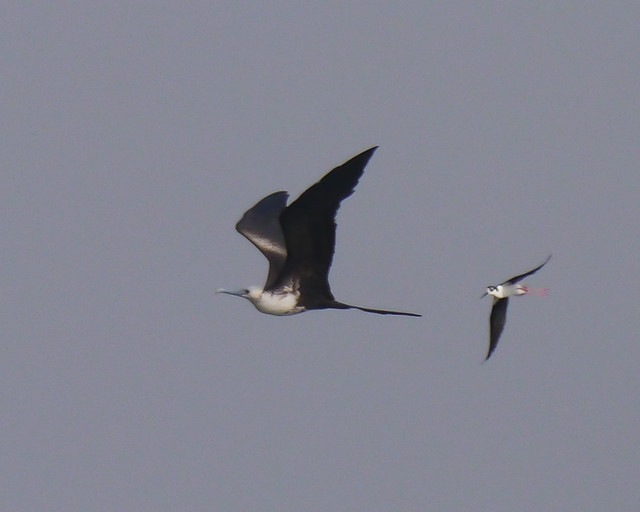
I've seen Black-necked Stilts nest by the boardwalk at the Turnbull Birding Center, and they didn't mind people nearby at all. Maybe the number of people at Charlie's Pasture is low enough that the stilts over here haven't gotten used to them yet.
After having reached the observation tower on Salt Island and starting to head back, a pair of summer-resident Least Terns scolded me and made a few close fly-bys, including diving at me a couple times. Here's the only photo I got:
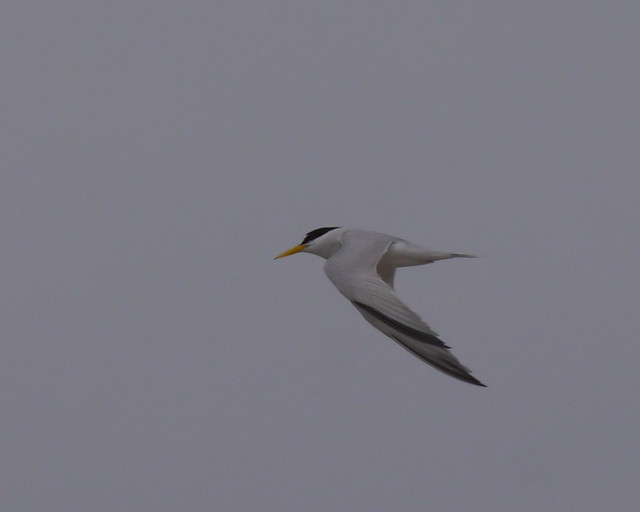
Later I saw a different pair of Least Terns in their courtship phase on the ground. Surrounded by dried out algal mats, the male offers a fish to the female:
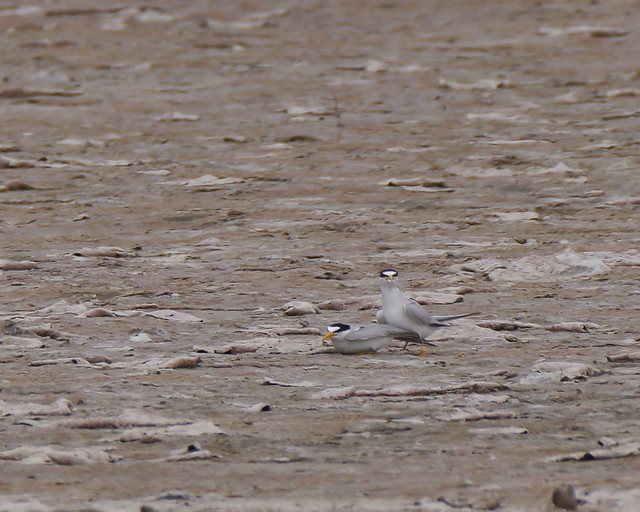
A little further up the boardwalk I got to see an interaction between two of our year-round resident small plovers. I started to hear the low purring calls of a Snowy Plover and looked off to the right to see two small birds chasing each other. A Snowy Plover was charging and chasing a substantially bigger Wilson's Plover, which showed no signs of fighting back. Here are some shots of the action:
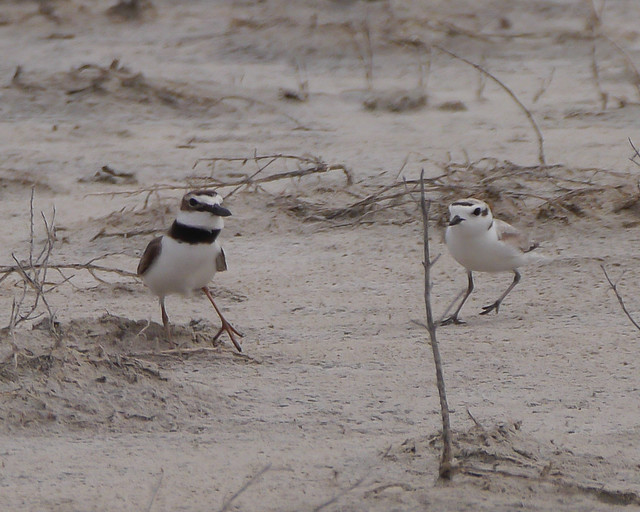
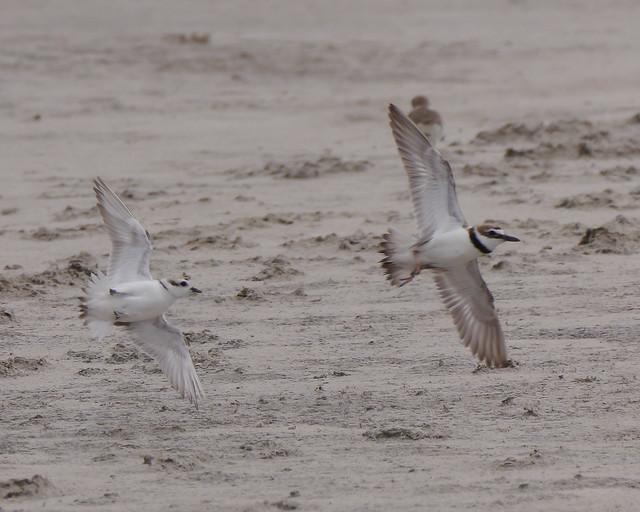
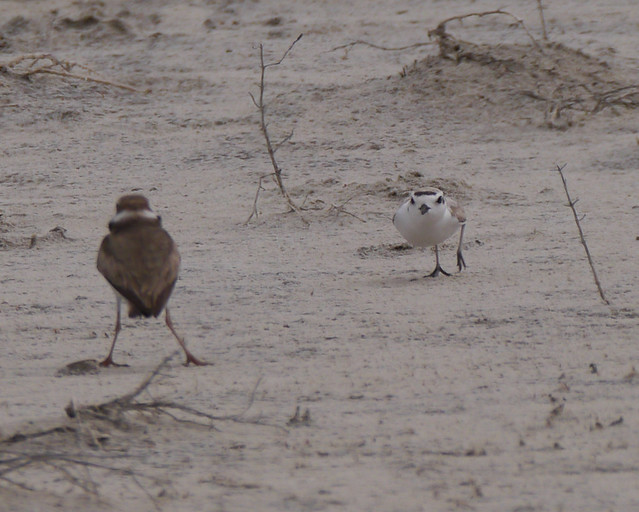
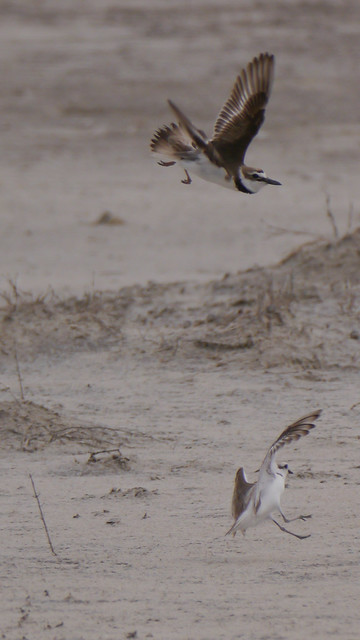
Snowy Plovers seem so quiet and meek when I see them wintering on the beach. It was so interesting to see this aggressive behavior from one.
Back near the north end of the boardwalk, the Black-necked Stilts were quiet, but the pair of Willets was even louder and more aggressive than before. They repeatedly called and approached me on the ground and in the air! I am used to seeing these birds in their dull gray and white winter plumage, so it was a treat to see them covered in the warm brown streaks and speckles of their breeding plumage:
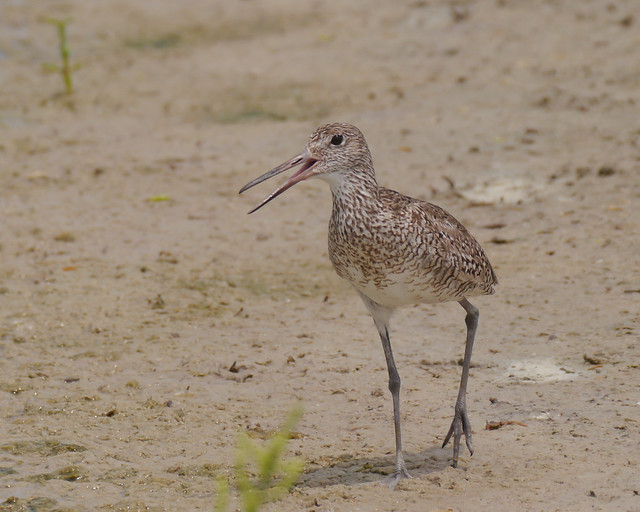
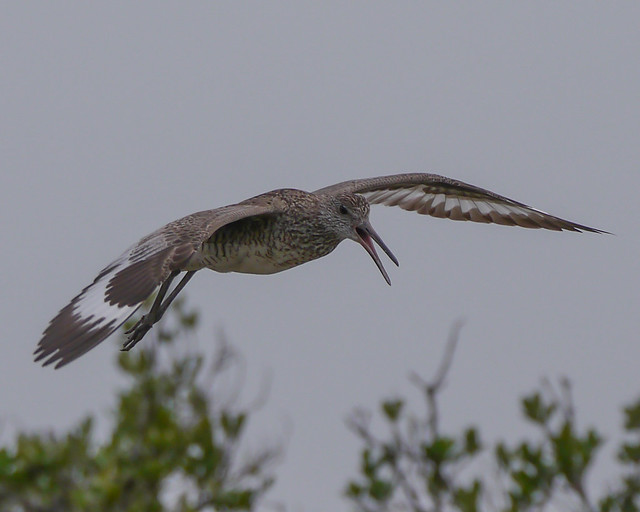
Some of the north-bound migrants still coming through included Wilson's Phalarope, White-rumped Sandpiper, Semipalmated Sandpiper, Semipalmated Plover, Sanderling, Dunlin, Stilt Sandpiper, and Ruddy Turnstone. It was nice to hear and then see a singing Painted Bunting, a species usually associated with spring migration that also breeds here on the preserve.
Some cool insect observations included many Seaside Dragonlets, a small species of dragonfly that can breed in brackish water. The females are dramatically patterned with black and orange:
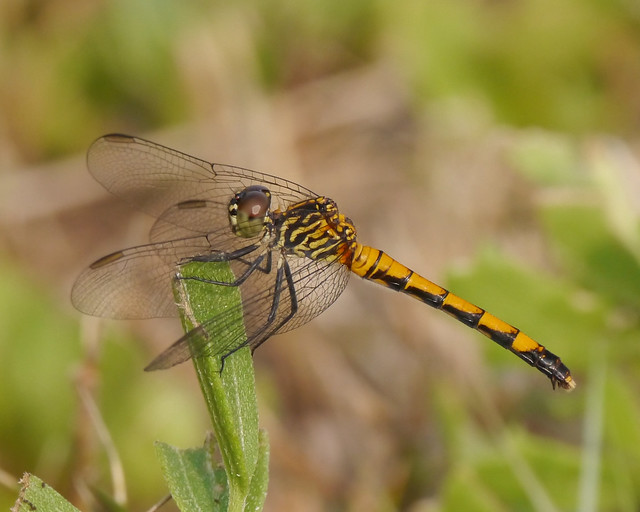
And I found two species of Tiger Beetles, a fast moving predatory beetle that likes bare sandy areas. Here's a White-cloaked Tiger Beetle:
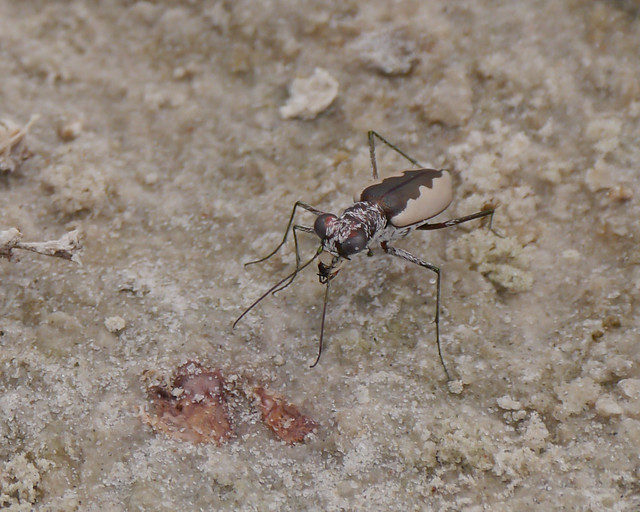
And I don't know what this one is yet:
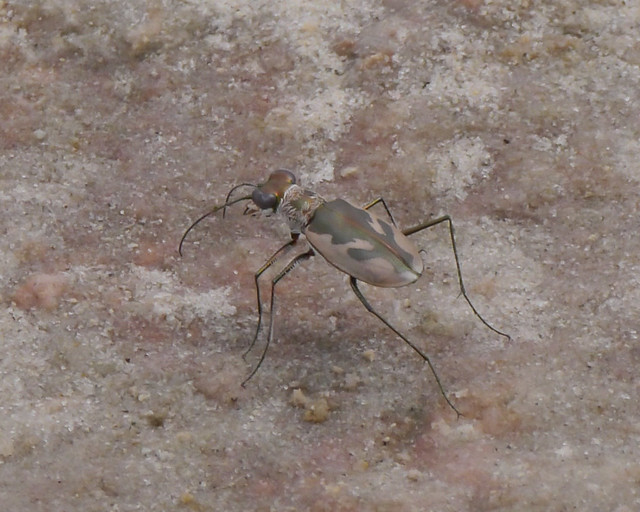
Here's my complete eBird list:
http://ebird.org/ebird/view/checklist/S37211475
And a few more photos on Flickr:
https://www.flickr.com/photos/mikael_behrens/albums/72157680080116984/
